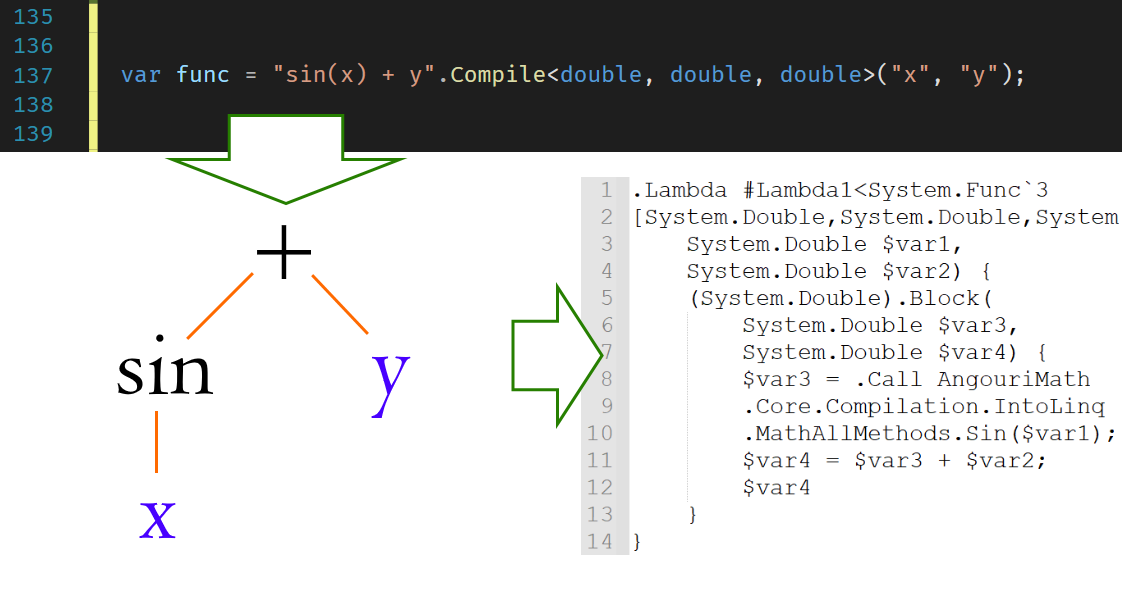Idiomatic Event Loop in C++

Sometimes programming with mutexes gets too complicated and messy. Maybe you need to meet a new friend — the Event Loop pattern.

The art of creating computer programs

Sometimes programming with mutexes gets too complicated and messy. Maybe you need to meet a new friend — the Event Loop pattern.

Many of us spend time in specialized telegram groups. The power over communication here belongs to random people with their own shortcomings. Conflict and abuse occurs regularly. Is there another way to keep order so that scam spam doesn't flourish and no one has total control over group members?
In my case, these thoughts led to the development and testing of a system that can be connected to your Telegram today.

Here I am going to cover my own approach to compilation of mathematical functions into Linq.Expression. What we are going to have implemented at the end:
1. Arithmetical operations, trigonometry, and other numerical functions
2. Boolean algebra (logic), less/greater and other operators
3. Arbitrary types as the function's input, output, and those intermediate
Hope it's going to be interesting!







Popular cloud hosting DigitalOcean has recently launched its new marketplace selling preconfigured images that can help to quickly deploy an application server. It’s much like AWS, but DO is for those already using this provider’s services. Let’s see how to deploy a simple server for WebRTC streaming with a DO account for a $10/month fee based on Flashphoner WebCallServer and how such a server can be of use.

Have you thought about the influence of the nearest metro to the price of your flat?
What about several kindergartens around your apartment? Are you ready to plunge in the world of geo-spatial data?




In this article, I would like to propose an alternative to the traditional test design style using functional programming concepts in Scala. This approach was inspired by many months of pain from maintaining dozens of failing tests and a burning desire to make them more straightforward and more comprehensible.
Even though the code is in Scala, the proposed ideas are appropriate for developers and QA engineers who use languages supporting functional programming. You can find a Github link with the full solution and an example at the end of the article.

Hi, my name is Michael Kapelko. I have been developing software professionally for more than 10 years. I develop games and game development tools in my spare time.
This article describes my first durable application for desktop PCs: PSKOV static site generator.
Durability
A durable application is an application that functions without a single change on operating systems released in years 2010-2030. In other words, a durable application has backward compatibility of 10 years and has the stability to run for 10 years. Actually, PSKOV runs even under Windows 2000, so PSKOV has backward compatibility of 19 years.


I like PHP for development speed and excellent portability. It's great to have such a tool in your pocket, always ready to solve problems.
For me it was quite sad that there was no Waves Platform SDK for PHP when i first met this nice blockchain. Well, I had to write such kit.
Some days ago we announced the availability of our release candidate (RC) of TypeScript 3.4. Our hope is to collect feedback and early issues to ensure our final release is simple to pick up and use right away.
To get started using the RC, you can get it through NuGet, or use npm with the following command:
npm install -g typescript@rcYou can also get editor support by
Let’s explore what’s new in 3.4!
